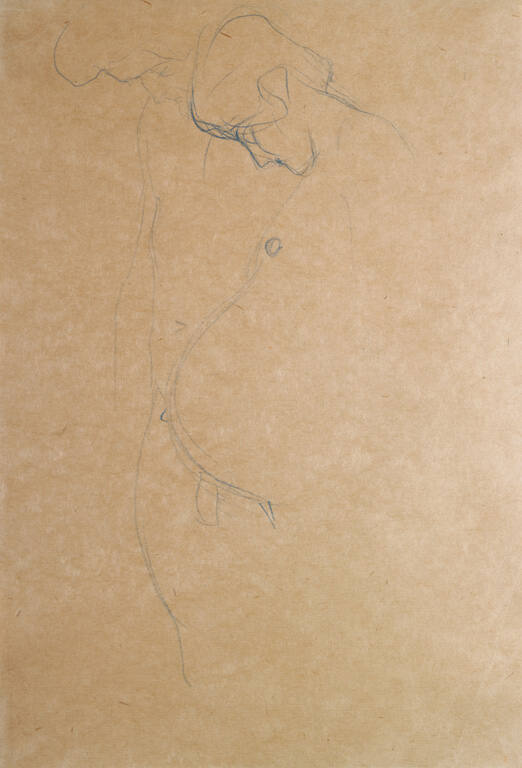
Object Details
Artist
Gustav Klimt
Medium
Blue crayon on brown paper
Dimensions
Sheet: 17 1/2 × 12 inches (44.5 × 30.5 cm)
Frame: 29 1/2 × 22 1/2 inches (74.9 × 57.2 cm)
Credit Line
Acquired through the Margaret Treman and Charles E. Treman, Jr., Class of 1930 Endowment; the Professor M. H. Abrams and Ruth Abrams Purchase Fund; the Herbert F. Johnson, Class of 1922, Endowment; the Warner L. Overton, Class of 1922, Endowment; the Old Master Drawings Endowment; and the Cronkhite Art Purchase Endowment; supplemented by Nancy Horton Bartels, Class of 1948, and Hank Bartels, Class of 1948; the Marcia Jacobson and Daniel R. Schwarz Johnson Museum Purchase Fund; and support from other donors
Object
Number
2010.044
A leading figure in the Vienna Secession, Klimt is regarded as one of the greatest decorative painte(…)
A leading figure in the Vienna Secession, Klimt is regarded as one of the greatest decorative painters of his time. This sheet is one of the earlier drawings for the painting Hope I (1903–04), now in the National Gallery of Canada, Ottawa. Startling in its overtly sexual depiction of a nude pregnant woman, Klimt was forced to withdraw it when it was first shown in the 1909 Secession retrospective.The painting is much darker in tone than the many preparatory drawings Klimt made for it. The woman, with her promise of new life, is set against four foreboding figures, harbingers of death, her nakedness making her vulnerable to their malevolent stares. Our drawing, like the other preliminary drawings, is much lighter and more delicate, with a gently wistful air, and includes the supportive figure of a male partner. It is possible that Klimt’s idea for the final composition changed after the death of his infant son, Otto Zimmermann, in 1902. (“Drawing the Line: 150 Years of European Artists on Paper,” curated by Nancy E. Green and presented at the Johnson Museum January 20–June 10, 2018)












